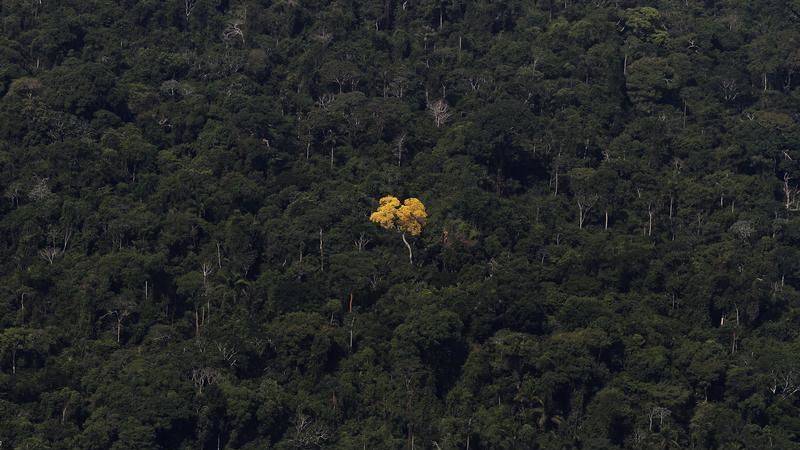The loss of biodiversity has become a key part of environmental concerns around ESG, and the legal industry should pay special attention to the challenges and opportunities this area offers
As environmental, social & governance (ESG) issues continue to occupy top of mind for many legal leaders, biodiversity has become an emerging ESG topic within the legal industry thus far in 2023. We discussed this topic with several legal experts on biodiversity to understand more deeply why it is important for lawyers to be knowledgeable on this emerging ESG issue.
Biodiversity & why it’s important
The fight against the loss of biodiversity — defined as the variety of animals, plants, fungi, and microorganisms that make up the natural world and work together in specific ecosystems to maintain balance and support life — has been around for more than 30 years. Only now, however, are the devastating effects of biodiversity loss being felt by humans in everyday life through such cataclysmic activities as deforestation for the cultivation of meat, or the use of chemicals in the production of fruit and vegetables that causes soil loss and other related harm.
Many scientists think the huge current loss of biodiversity could be the start of a new mass extinction, and new research indicates that ecosystems will collapse in the future, if significant action is not taken to reverse these losses.
Governments & business collaborating
As a result of these scientific predictions, governments are now paying more attention, and global agreement on how to best mitigate biodiversity risks through multilateral mechanisms is growing. Although the United Nations has been meeting on this issue through the Convention on Biological Diversity since the mid-1990s, only recently did it set time-bound goals for 2030 and 2050 to build a global guide to reverse nature loss.
About the same time, biodiversity losses gained steam as an ESG-related business topic in 2021 with the launch of the Taskforce on Nature-Related Financial Disclosures (TNFD), a financial services industry advisory group whose members represent more than $20 trillion in assets. The TNFD provides guidance on how to identify and mitigate nature-related risks for companies’ business operations around the globe, principally through its Nature-Related Risk & Opportunity Management & Disclosure Framework, building on the work done by the Taskforce on Climate-Related Financial Disclosures.
New versions of the TNFD’s Framework are released at least once a year, and revisions are intended to ensure that the Framework is applicable and used by corporations, borrowers, and financial institutions of different sizes and in different contexts as well. Most recently, it released its fourth and final beta framework in late-March.
Since the inception of the TNFD, the group has crafted draft disclosure recommendations to incorporate dependencies and impacts on nature alongside risks and opportunities to organizations. The TNFD Framework does not seek to set standards, but instead hopes to develop an integrated framework for the management of these risks and opportunities as well as disclosures which can all feed into the specific standards and disclosure requirements being developed by other organizations, such as the International Sustainability Standards Board.
The release of the TNFD’s third iteration of its beta framework in Fall 2022 included proposals relating to: i) new disclosure recommendations related to supply chain traceability, the quality of stakeholders, engagement, and the alignment of an organization’s climate and nature targets; and ii) draft guidance on target-setting developed with the Science-Based Targets Network and draft disclosure guidance for financial institutions.
Collaboration between governments and the private sector is key to halting and reversing the losses in biodiversity ecosystems. To truly make a difference, engagement with private sector entities is necessary “to make sure that money is going to nature-positive events rather than nature-negative ones,” says Simon Walsh, special counsel in the global litigation practice of Cadwalader, Wickersham & Taft. Walsh has experience in helping financial services companies launch sustainability-linked financial products that align with pro-biodiversity principles.
Partnership in this space between the public and private sectors took a giant leap forward when Germany joined existing states (including the United Kingdom, The Netherlands, and Switzerland) in announcing their funding support for the TNFD at the Convention on Biological Diversity held in December.
Biodiversity legal work increasing
As the financial sector evolves to identify and mitigate nature-related risks more effectively, it is also innovating to expand sustainability-linked financial products. As a result, Walsh says he sees biodiversity loss growing as a concern for litigation risk. “There is a lot of litigation risk around green products, if they’re not correctly labelled or described, or if they’re not achieving the targets that people think they’re meeting,” he explains, adding that in this emerging space, it is important for these products to be “de-risked” and for lawyers to stay current with ESG regulation.
Beyond the financial sector, businesses whose operations interact with nature or contain some dependency on nature are vulnerable to biodiversity risks. In fact, Sukhvir Basran, partner at Cadwalader’s financial services group and ESG practice, says it has become a growing concern for her clients. Basran helps clients integrate the myriad of benchmarks and standards into governance, compliance, and investment processes.
Indeed, Basran says she has a front-row seat to see how banks, private debt clients, mid-market borrowers, and sponsors are considering how to integrate biodiversity principles — as well as climate and social issues more broadly — into their business operations and investment decisions.
On the horizon
The momentum to take action against biodiversity losses is here to stay, according to Basran and Walsh. The TNFD’s work is significant because financial institutions help drive money flows and investment.
At the same time, whether or not the TNFD’s disclosure framework will remain voluntary or if the strong interest from policymakers and regulators indicates regulatory action is imminent remains to be seen. “Either way, it is going to move to a stronger legal footing at some stage,” says Basran. That’s why it is important for business and lawyers involved with ESG matters to get educated now.







